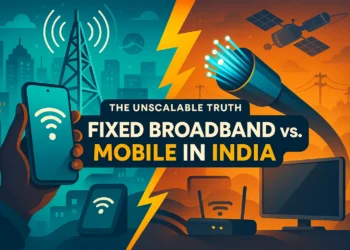Yesterday, Airtel announced the expansion of its 5G services across India by re-farming its mid-band spectrum on the 1800, 2100, and 2300 MHz bands. This strategic move aims to enhance browsing speeds and improve indoor coverage for its consumers. In their press release, Airtel highlighted the increasing demand for data as the impetus for accelerating the re-farming of its existing spectrum to deliver a superior 5G experience. Furthermore, Airtel revealed plans to simultaneously operate both 5G SA (Standalone) and NSA (Non-Standalone) networks, positioning itself as the first in India to adopt this dual approach. This article seeks to demystify how Airtel’s initiative will benefit consumers, explore potential challenges, assess any impacts on performance from running 5G SA and NSA concurrently, and discuss possible solutions to these issues.
Understanding the Basics
a) User Registration
To fully appreciate the benefits and implications of Airtel’s recent announcement, understanding some fundamental concepts about how wireless networks function is essential. Wireless networks, particularly 5G, can operate in two distinct modes: Standalone (SA) and Non-Standalone (NSA). Both modes rely on a system referred to as the “Combo Core,” which ensures compatibility with the existing 4G (LTE) network. This core system is designed with advanced registration capabilities, distinguishing whether a user is connected as a dedicated 5G SA customer or through an NSA or purely 4G LTE connection. This distinction is crucial for leveraging the full capabilities of 5G while maintaining seamless service across different network types. The diagram below offers a visual breakdown of these connections, enhancing your understanding of how these technologies coexist and function.






